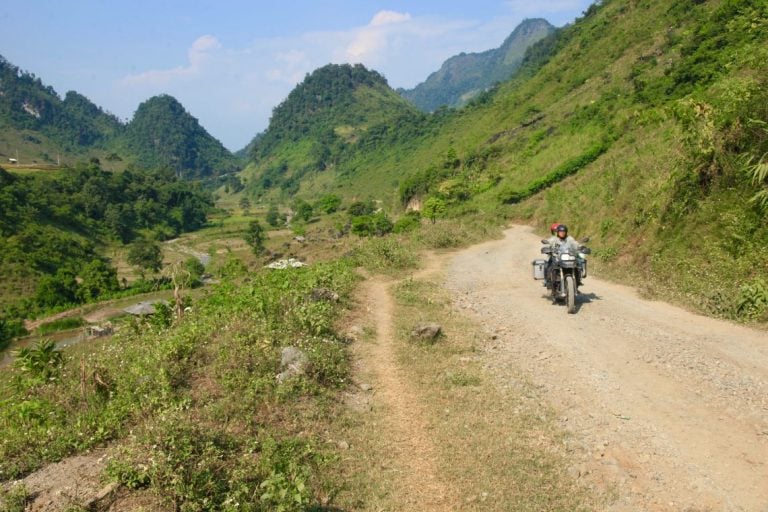The past and present collide as Ian Neubauer takes a journey of discovery in Vietnam Photos by Ian Lloyd Neubauer and Phan Thi Long
Ingenious battlefield strategy, super-human strength, booby traps filled with poisonous vipers and pointy bamboo sticks. These are just some of the things floated around to explain how a ‘ragtag’ bunch of Vietnamese guerrillas forced the retreat of the most powerful army the world has ever seen.
But the truth is much simpler. The Americans lost the war in Vietnam because they were fighting against an idea, communism, while the Vietnamese were fighting for their homes. Retreat was never an option because they had nowhere else to go. The victory came at a terrible price. By the time hostilities ended in 1975, the death toll was in the millions.
The struggle, however, helped forge a great nation. Vietnam has gone from being one of the poorest countries in the world since the end of the war, to a lower-middle-income one with the highest living standards in Southeast Asia after Singapore.
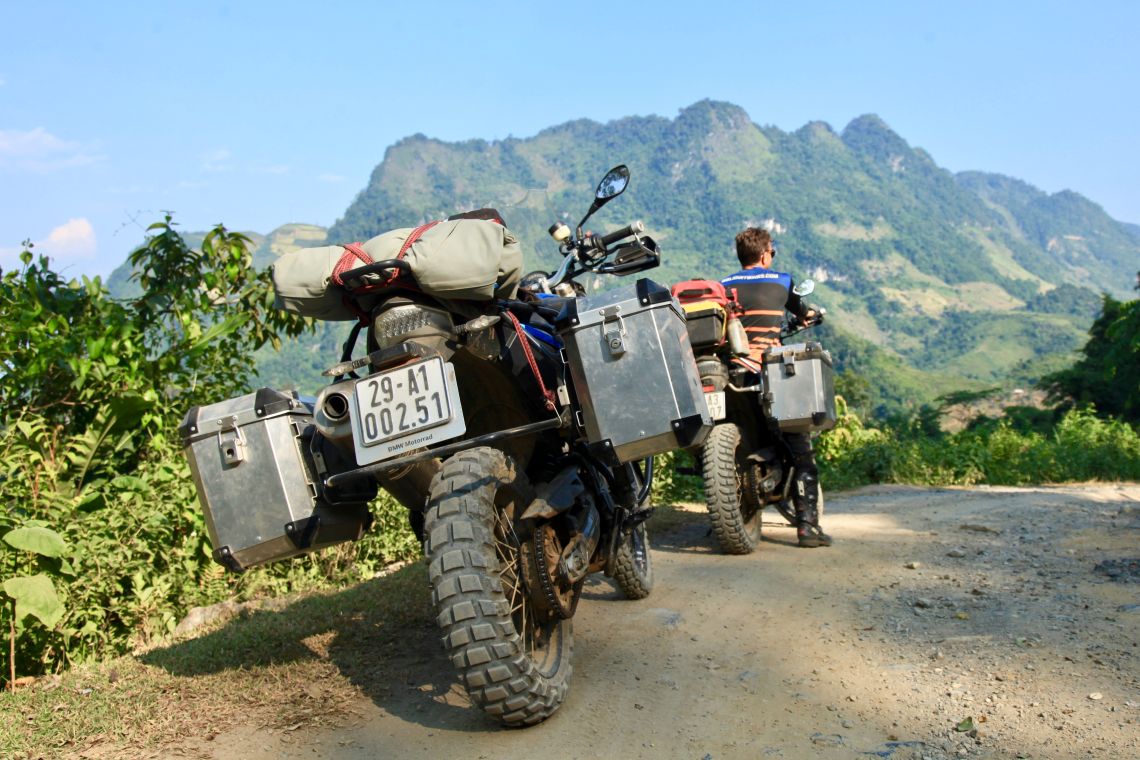
This is a story about a Vietnamese motorcyclist who embodies his nation’s spirit of independence. When tourists began trickling into Vietnam in the 90s, Tuan Nguyen launched a motorbike touring company using the Minsk, a 125cc Soviet machine renowned for its reliability. You may recall seeing Richard Hammond riding one during Top Gear’s Vietnam Special in 2009.
In the 2000s, Tuan replaced his Minsks with Enfield Bullets, slow but unstoppable 350cc Indian road bikes. In 2019, he upped the ante again with a fleet of BMW adventure bikes – the first tour leader in Southeast Asia to do so. But, as BMW is not supporting touring in Vietnam, he had to do it without any of the help companies in other parts of the world depend on to maintain their fleets and build their customer base. Add Vietnam’s brutal 80 percent import tax and it looks like mission impossible. But Tuan did it anyway.
Now, Tuan and I have history. Five years ago, I travelled to Vietnam and rode with him north from the capital Hanoi to Dong Van, a mountainous region bracing the Chinese border I dubbed Vietnam’s ‘Hidden Himalayas’ in a report for the BBC. It was an incredible adventure and I’d always wanted to return, and recently I did.
But for this visit, Tuan plotted an alternative route heading west out of Hanoi to show me parts of the old Ho Chi Minh trail – a network of tracks the North Vietnamese used to smuggle manpower and supplies during the war. And instead of shitty old Bullets, we went armed to the teeth with the BMW F 800 GS.
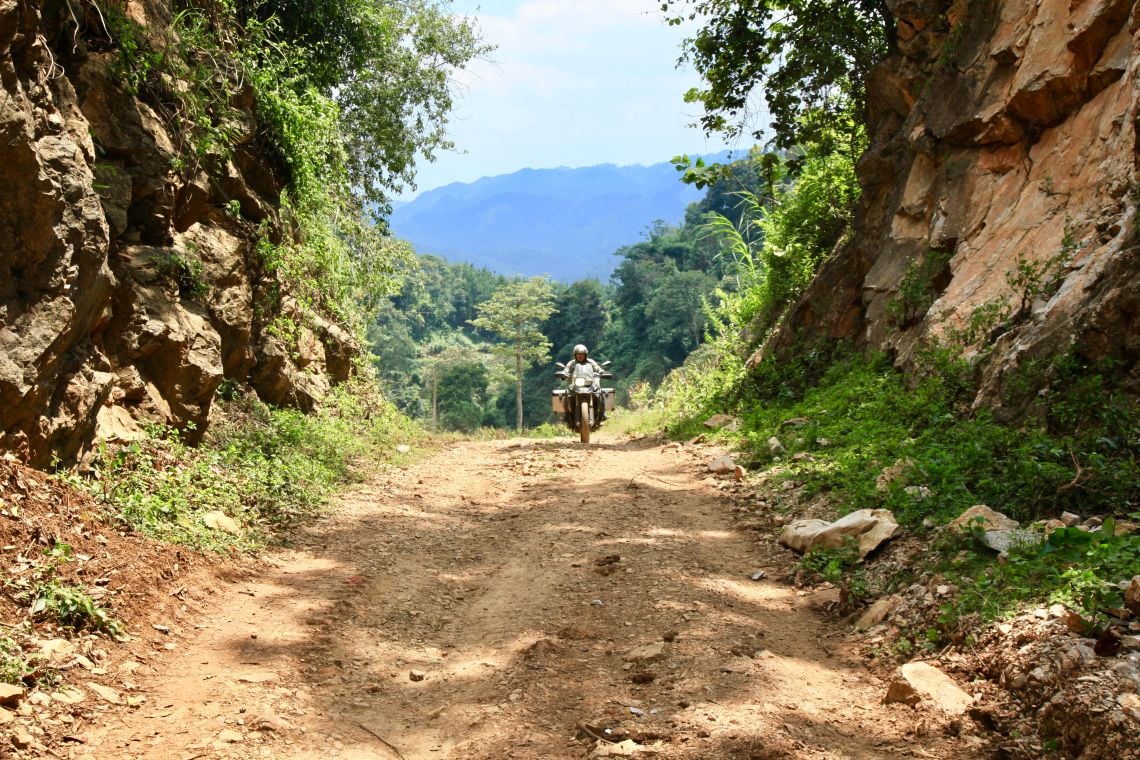
“My father spent six years fighting in those mountains,” says Tuan, pointing at a series of limestone karsts that rise out of the ground like giant chess pieces at a village near the Laotian border. “He lost his hearing for a while from getting caught up in so many bombing raids. Did you know America dropped more bombs on Vietnam than they dropped on both Germany and Japan during WWII?”
We get an inkling of an idea of the hardship Tuan’s father endured during this service when we hit one of the old access lines to the Ho Chi Minh trail – a 2m-wide walking trail hacked through the jungle. It’s a corruption of rock gardens and deep muddy ruts, and at times skirts deep ravines that leave no room for error. Tackling it is laborious in the 35C heat and I lose count of the number of times we get bogged, but it’s nothing our Beemers can’t dig out of with ease.
“During the war the only thing our soldiers had to help them carry things up these mountains were bicycles,” Tuan notes. “They’d load them with up to 500kg of ammunition.”
At midday, we stop at a flyblown town for a couple of bowls of pho, which is delicious Vietnamese beef noodle soup. The locals are amazed by the size of our bikes and by the nature of our journey. “They say nobody comes here because of the terrible roads,” Tuan translates. “They don’t understand how coming here is our idea of fun.”
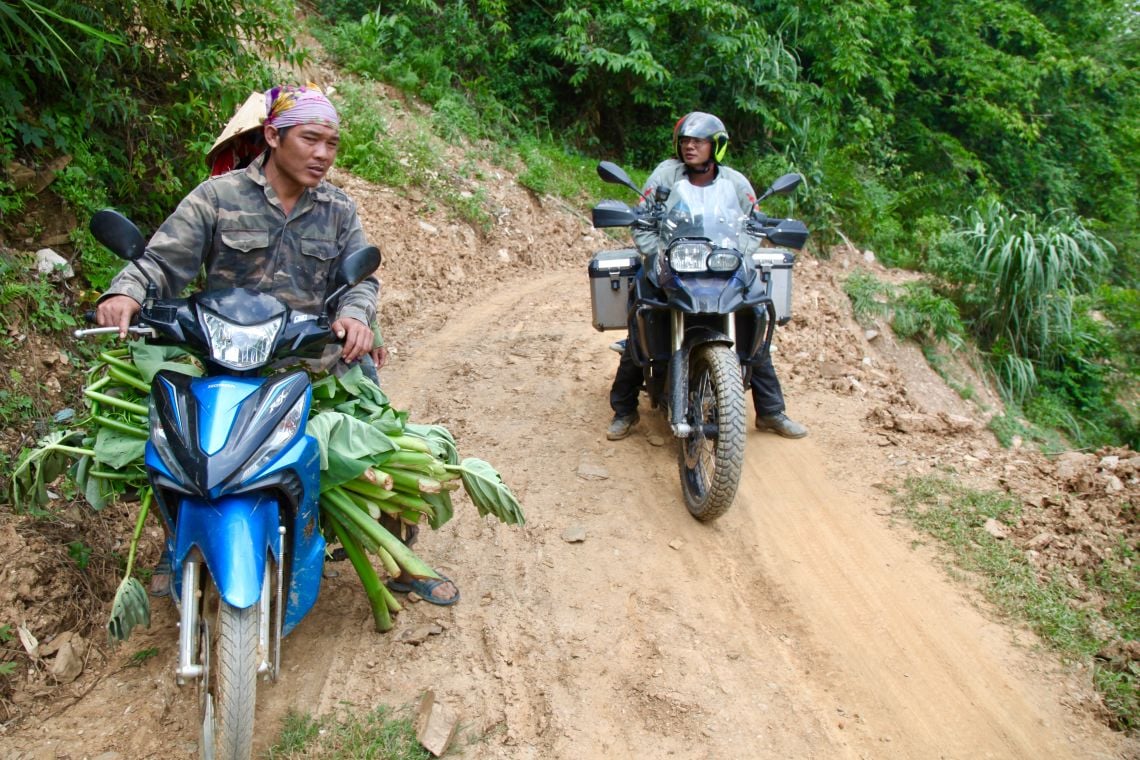
We get more curious looks and comments from locals where ever we go, though one guy in particular, makes Tuan a little nervous. “He asked many questions about you. Must be an undercover policeman,” he says, explaining how the Ho Chi Minh Trail is now a major drug smuggling route from the Golden Triangle, a name coined by the CIA for the cross-border zone that’s one of the largest opium-producing areas on Earth.
“The police have placed cameras hidden in many places around here and they play the footage of drug smugglers on the news so the public can help identify them. But the terrain is so complex the police really can’t stop them.”
In the late afternoon, we merge onto a highway. It is a ribbon of steamrolled perfection that ebbs and flows around streams on an alluvial plain checkered with emerald-green rice paddies. After crawling through the jungle in low gear all day, it’s a pleasure to let the throttle out and hear our Beemers purr, despite the large number of trucks on the road.
“Ten years ago, this highway was a dusty road and only a few buses passed by every day,” Tuan says as we knock back a few beers and grilled pork with rice at a roadside stall later in the evening. “It’s brought opportunities for the locals and that’s good. But sometimes I think Vietnam is developing too fast.”
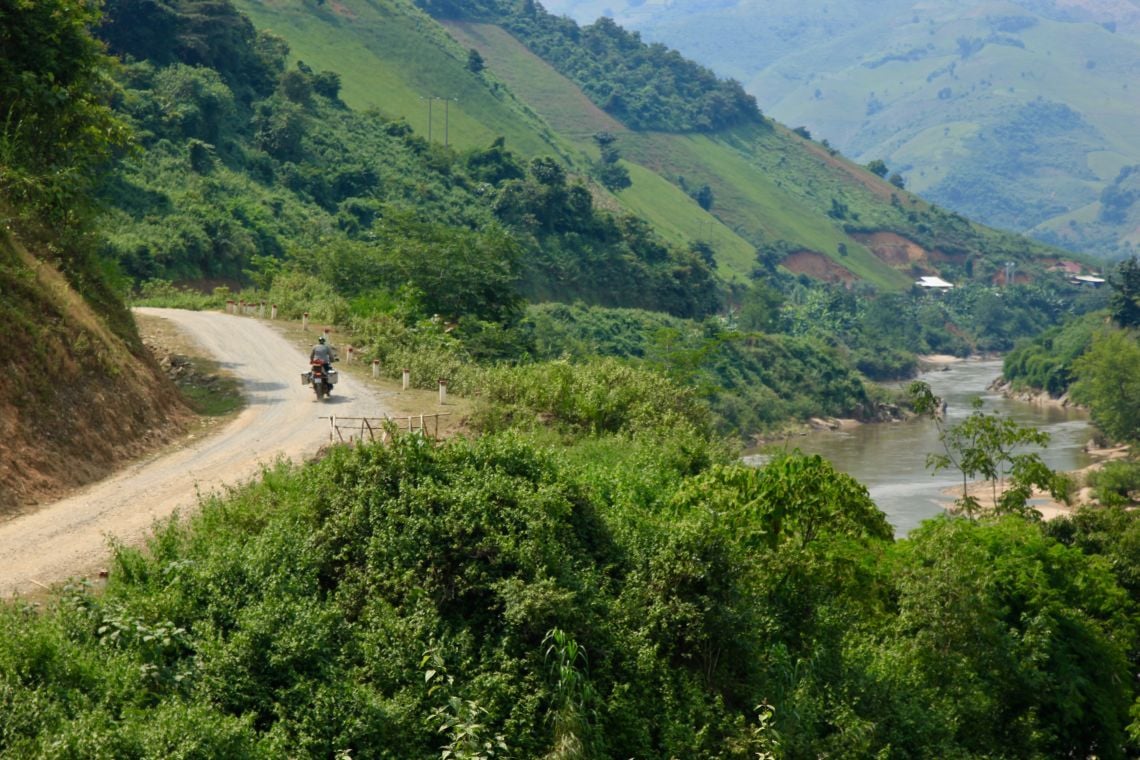
The next day I was awoken at 5 am by patriotic tunes blaring from public loudspeakers – a hangover from the war. We see a much nastier hangover later that morning at a café. A baby with a lopsided skull who’s missing an ear. The deformity, Tuan explains, was likely caused by Agent Orange, a toxic defoliant the Americans used to burn the jungle in Vietnam and to deny guerrillas cover from dreaded B-52 bombers.
“Many healthy women in Vietnam today bare children with deformities because Agent Orange is embedded in our genes,” he says.
Motorbikes have a way of making one forget bad things, though I still carry some of the heartache the baby’s mother must feel as we career between hills that grow larger and take on crazier forms as we veer northwest. We pass cone-like mountains hundreds of metres tall and ridgelines resembling rows of dragon’s teeth. And always in the background are blue-grey ranges, like folds in the hide of a giant who ate half the sky.
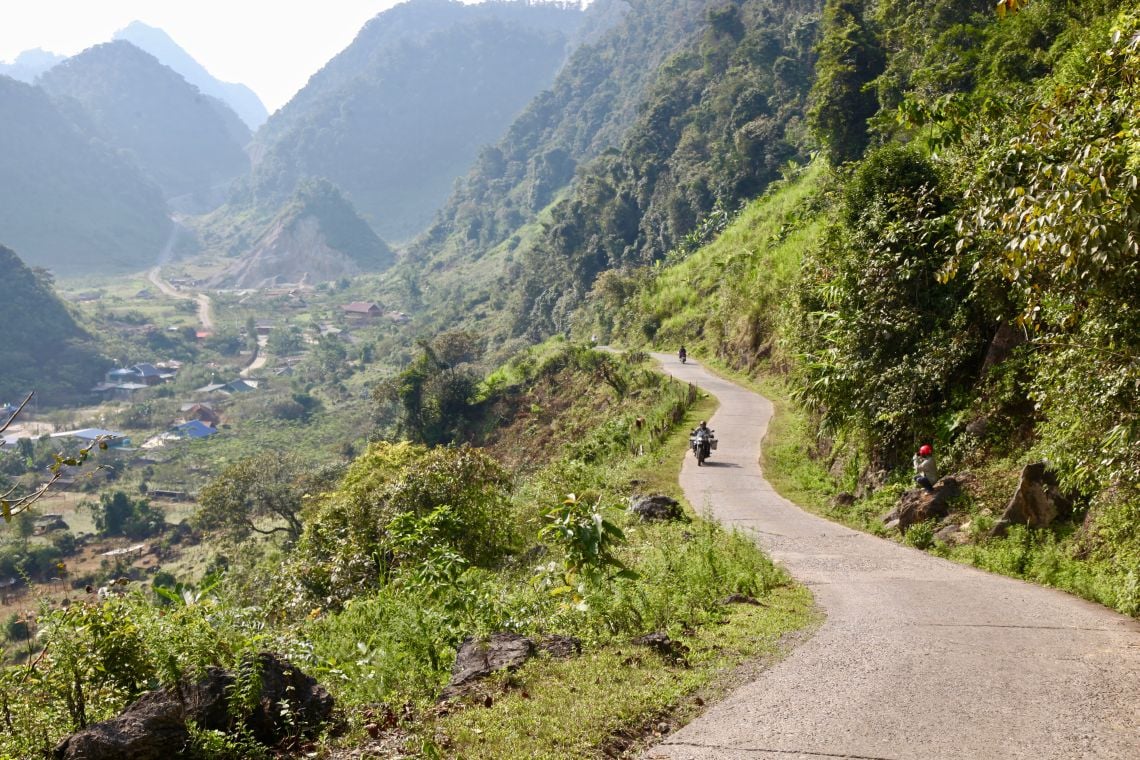
The days melt into each other as we follow zig-zagging mountain roads laden with hundreds of hairpin turns where the asphalt has been ripped to shreds by heavy rains and even heavier vehicles. Every time we approach one, we lay on the brakes, drop to second gear, stand up, bend the knees, find the cleanest entry line and muddle through before finding the cleanest exit line. When we stop for breaks, we collapse on the dirt while mumbling to ourselves about the sunburn, the cramps, our sore backs and swollen wrists.
But overcoming these discomforts is part of the reward, along with shots of potent rice wine and gregarious feasts we are served every evening at quaint little homestays. In Vietnam, there’s no such thing as a light meal. Spring rolls, crab soup, barbecued chicken, fish stew, roast duck, vegetables, rice, dipping sauces, spices, tropical fruit. More rice, more grilled meats, more greens. If there’s any space left on the table, they just bring more.
One evening I’m stumbling around a homestay half-drunk in the dark looking for a bathroom when I find a little room full of candles surrounding a framed photo of a Vietnamese man in military fatigues. When I return to the table, our host tells me it is a shrine for his late father who was killed by an American sniper. But to paint the American GIs and Australian diggers who fought alongside them in this war as monsters is to twist the truth.
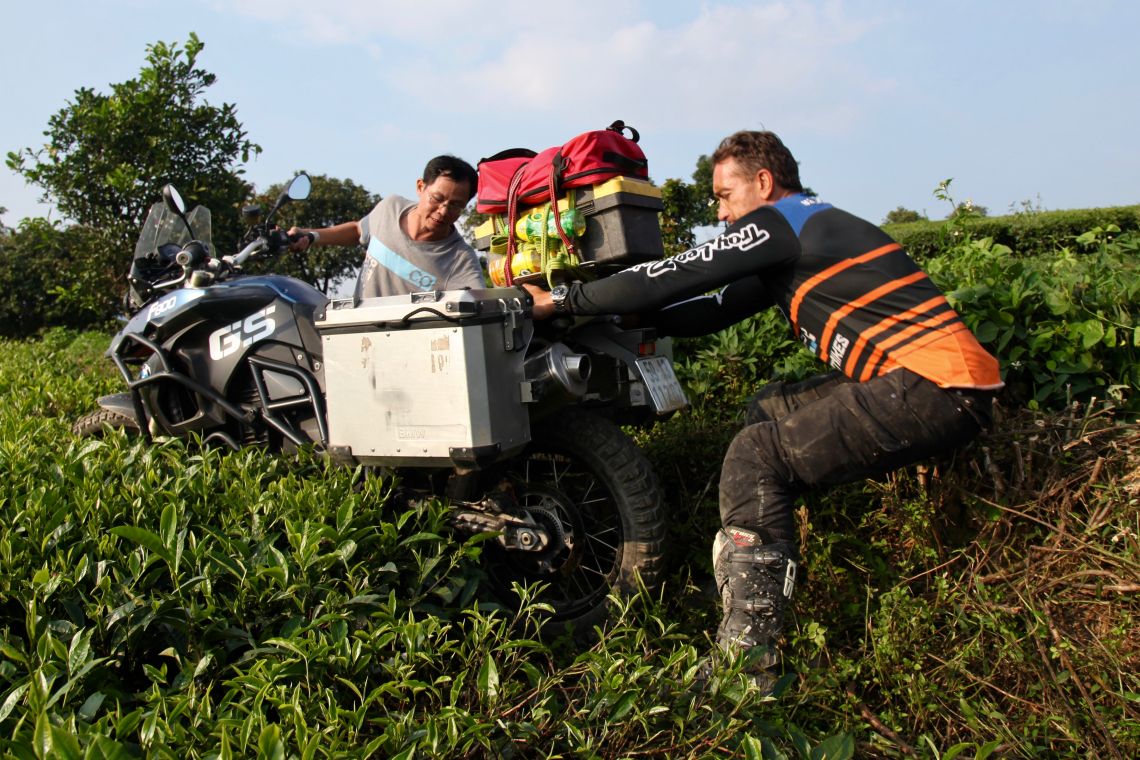
Most were only in their teens, either conscripted or conned by their governments to go to war against the ‘Yellow Peril’ and nearly 60,000 of them died face down in rice paddies. Some of those who survived have actually returned to Vietnam to make peace with their former enemies. “My uncle once met an Australian man travelling through Vietnam who was stationed in Da Nang during the war,” says Tuan. “When they talked, they learned they were in a battle together, on opposite sides of course. They hugged and cried together because they realised they could have killed each other. They were so happy to know the other was still alive.”
Motorbikes provide access to remote parts of the world most tourists will never see. They also teach you problem-solving skills because you can’t call the auto club when the shit hits the fan in the bush. Like the day we take a wrong turn into a tea field and hit a dead end. The trail is too thin to pull off a U-turn so we basically have to flip the 300kg motorbikes with our hands. The only way to do so is by leveraging specific parts of our bikes.
This is one of the skills taught at a week-long instructional course at the BMW Motorrad school in Munich that tour leaders must attend to become official partners. But at £13,000 per head, it prices most Vietnamese out of the market. So, Tuan learned to do it the hard way – by trial and error.
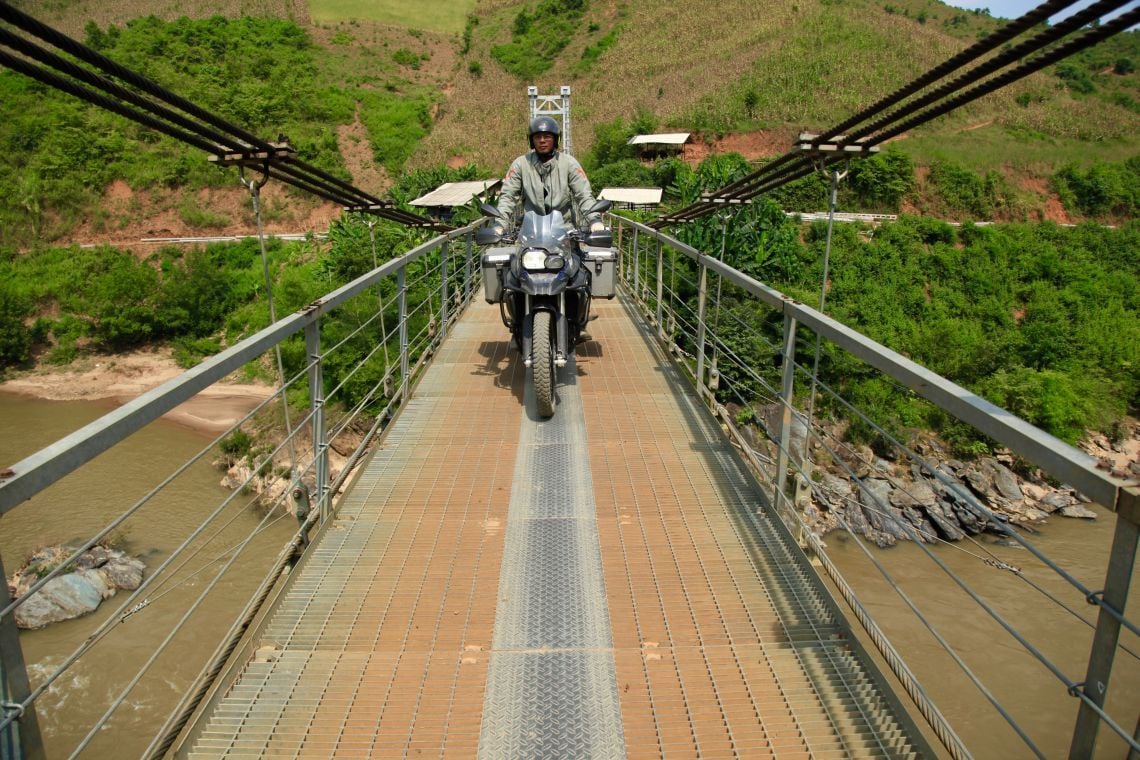
Another time I forget to switch off my ignition when we stop for lunch and by the time we return, my battery is flat. We solve the problem by stripping back a set of electric cables, connecting Tuan’s good battery to my flat battery and wait an hour or so for it to charge. And, when we fall over on the trails, we rush to each other’s aid, using brain, not brawn, to pick up our heavy bikes. Independence, mateship, cooperation and self-resilience, these are the key takeaways from my adventure in Vietnam.
Coming off in the dirt or mud is one thing. Coming off on asphalt is another altogether. One day I’m riding behind Tuan through a tight bend when a minibus comes barrelling towards us on a collision course. Tuan just manages to avoid it but I don’t. It clips my pannier and bowls me over. Fortunately, both the motorbike and I emerge unscathed.
But an argument erupts between the bus driver and Tuan over who is at fault. Things heat up and the bus driver makes a near-fatal mistake when he pokes my guide in the chest. Tuan is tiny, only 5ft high, but he happens to be a fifth-dan red-belt Kung-Fu master. He was taught to fight by his father, who was taught by his father who once confronted a group of 12 armed men who broke into his home.
Six of the intruders were killed in the melee, the other six laid swords down and begged for forgiveness. But today Tuan decides turns the other cheek. “It would bring me shame to fight with an ordinary man like him,” he says.
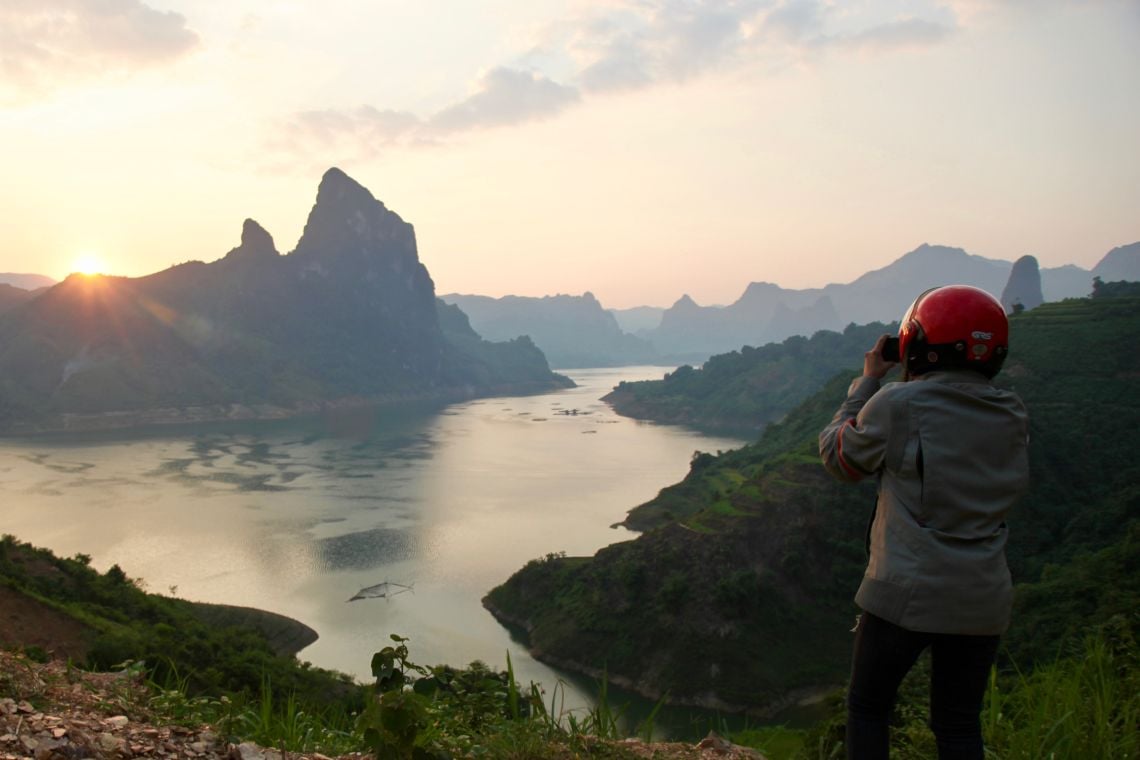
On the second last day of our tour, we pull over to see the sunset over a wide curve in the Da River. Directly in front of us is a pyramid-shaped karst with spectacular vertical walls and rocky overhangs.
To the right and left are staccatos of rice terraces set on impossibly steep hills, marvels of engineering probably dug with shovels and picks. And floating on the water, a mirror of silver and gold, are a few little boats where fisherman cast their nets. It is the most beautiful sight I have seen in my life.
“My dream is to build a luxury eco-resort on this very spot with a swimming pool between the rice fields,” Tuan tells me, though his plans for his touring business are more proletarian. “I don’t care about becoming an official partner of BMW,” he says. “All I care about is bringing adventure riders to Vietnam. Make life a ride. Isn’t that BMW’s motto?”

